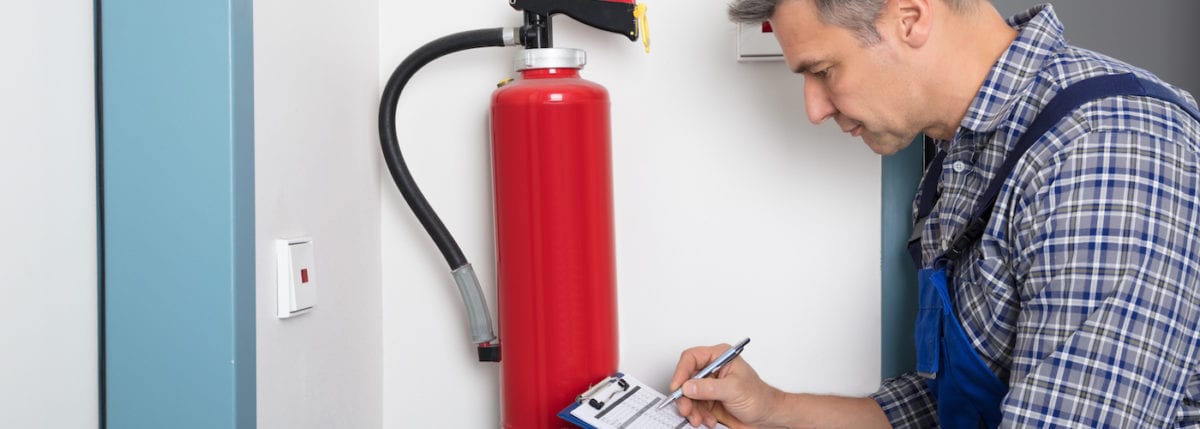Fire Extinguisher Maintenance and Care

Proper fire extinguisher maintenance helps you face the unexpected, ensuring you’re ready to protect your property from fire damage. While fire extinguishers can have a long lifespan, it’s important to check on them periodically to avoid expiration and issues. Adding fire extinguisher maintenance and care to your seasonal home maintenance checklist keeps you prepared during an emergency; learn what to look for and stay prepared during an emergency.
Fire Extinguisher Types
There are four different fire extinguisher classes, each designed to tackle specific fire starters.
- Class A fire extinguisher – This class puts out fires started by regular combustible materials such as wood, cloth, and paper.
- Class B fire extinguisher – Class B is best for fires that spring from combustible gases or liquids such as propane, ethanol, or gasoline.
- Class C fire extinguisher – Class C fights against electrical fires.
- Class K fire extinguisher – Most commonly used in kitchens and restaurants, Class K emits a fine chemical mist to stop grease fires.
What kind of fire extinguisher is best for your home? We recommend equipping your home with an all-purpose fire extinguisher, known as an ABC extinguisher. These multi-rated fire extinguishers are designed to handle several types of combustible materials and will enable you to act fast without second guessing what caused the fire.
Fire extinguishers should be placed throughout the home, ideally with one on each floor and especially in both the kitchen and garage, which is where many home fires begin. Fire extinguishers should be easily accessible and not blocked or buried by other household items.
How Often to Perform Fire Extinguisher Maintenance
While most fire extinguishers can last anywhere from five to fifteen years, they can expire at any time in between due to a variety of causes. Proper fire extinguisher maintenance includes checking your canister at least once a year, looking for the following visual clues:
- Pressure level – Look at the pressure gauge to see whether the needle is in the green zone. This indicates that your canister’s pressure is right where it should be.
- Wear and tear – Dents, leaks, and rust found on your fire extinguisher could indicate it’s not up to its highest performance and should be replaced.
- Intact parts – In order for your fire extinguisher to work properly, all components must be in place, including the pin, nozzle, and all external parts.
One thing that is not a part of fire extinguisher care is actually testing the canister. Pressure testing fire extinguishers is a more involved process that should only be conducted by certified inspection professionals. If you’re unsure whether your fire extinguisher passes the test, schedule an appointment with The BrickKicker for expert service.
Keep Your Home Safe with The BrickKicker
Adding fire extinguisher maintenance and care to your home maintenance checklist is a smart way to be prepared during an emergency. We prioritize safety above all else and are here to keep your home or commercial property performing as it should. Contact us for all your inspection needs!